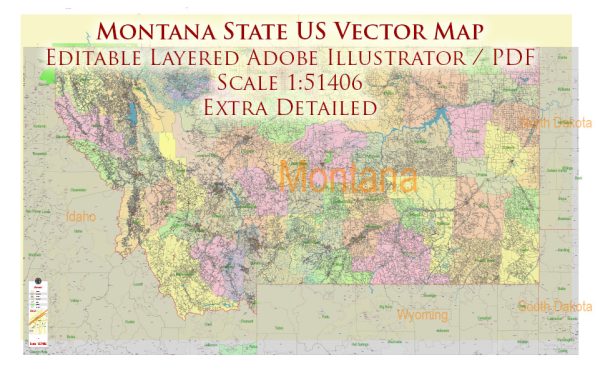Montana’s history of urban development is characterized by a unique blend of natural beauty, resource extraction, and a relatively sparse population. The state, known for its vast landscapes, mountains, and plains, has seen the evolution of urban centers influenced by agriculture, mining, and later, tourism.
- Indigenous Presence: Before European settlement, various Native American tribes, including the Cheyenne, Sioux, Crow, and Salish, inhabited the region. These communities had their own systems of settlement and land use, often relying on the abundant natural resources for sustenance.
- Fur Trading and Exploration: In the early 19th century, fur trappers and traders ventured into the Montana territory. Forts and trading posts were established, marking the initial points of Euro-American settlement. However, these were often isolated and did not develop into substantial urban centers.
- Mining Boom: The discovery of gold in the mid-19th century, particularly in places like Virginia City and Bannack, sparked a mining boom that attracted a significant influx of people. Towns and camps sprang up around the mines, with some evolving into more permanent settlements. However, the boom-and-bust nature of mining towns meant that not all of them thrived in the long term.
- Railroad Expansion: The development of railroads in the late 19th and early 20th centuries played a crucial role in Montana’s urban growth. Cities like Butte, Helena, and Missoula became important railroad hubs, facilitating the transportation of goods and people. The railroad also contributed to the growth of industries like timber and agriculture.
- Agricultural Expansion: The fertile valleys of Montana supported agriculture, leading to the growth of towns and cities focused on farming and ranching activities. Bozeman, for example, saw development as an agricultural center and later as a college town with the establishment of Montana State University.
- Modern Urbanization: In the 20th century, Montana’s urban centers continued to evolve. Bozeman and Missoula, in particular, experienced growth as educational and cultural hubs. The influence of outdoor recreation and tourism also played a role, attracting people to the state for its natural beauty and outdoor activities.
- Contemporary Trends: Today, Montana’s urban development is shaped by a balance between preserving its natural environment and accommodating the needs of a growing population. Cities are expanding, and there is ongoing development, but there is also a concerted effort to maintain the state’s unique character and protect its pristine landscapes.
Throughout its history, Montana’s urban development has been influenced by a combination of economic activities, natural resources, and the enduring appeal of its picturesque surroundings. The state continues to grapple with the challenges of growth while striving to maintain its distinctive identity.


 Author: Kirill Shrayber, Ph.D.
Author: Kirill Shrayber, Ph.D.